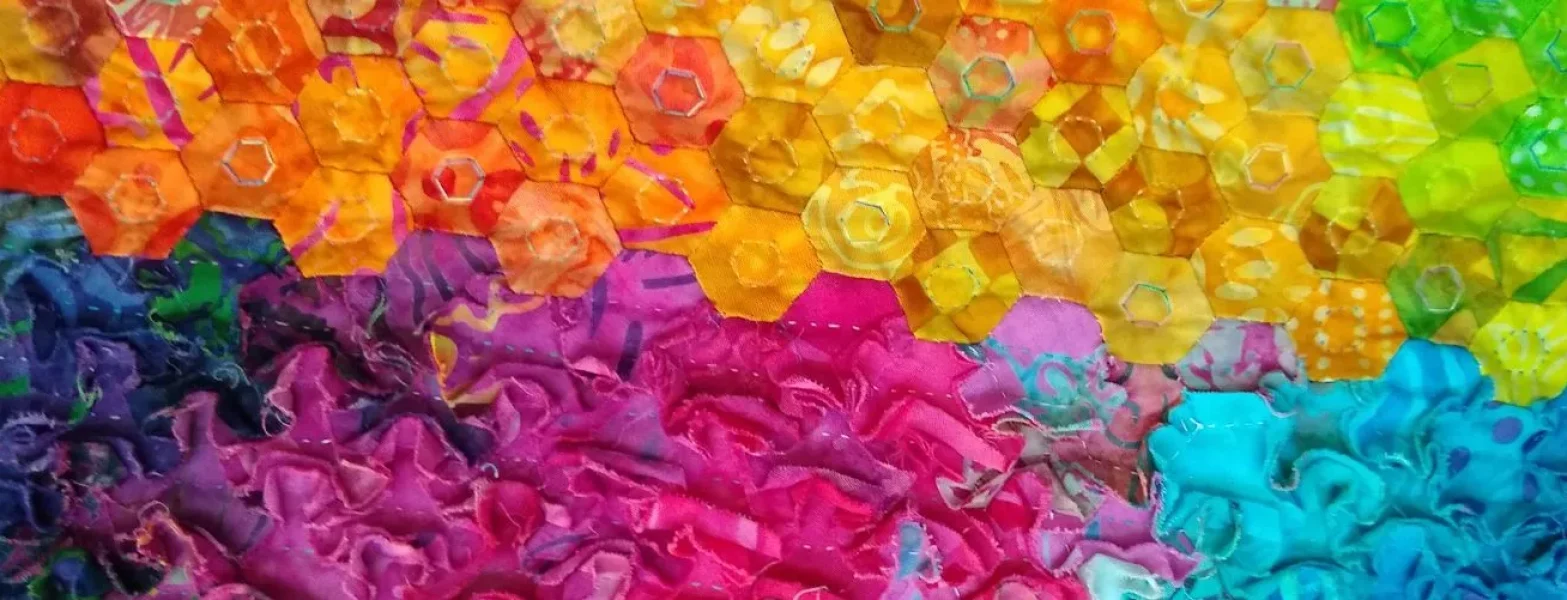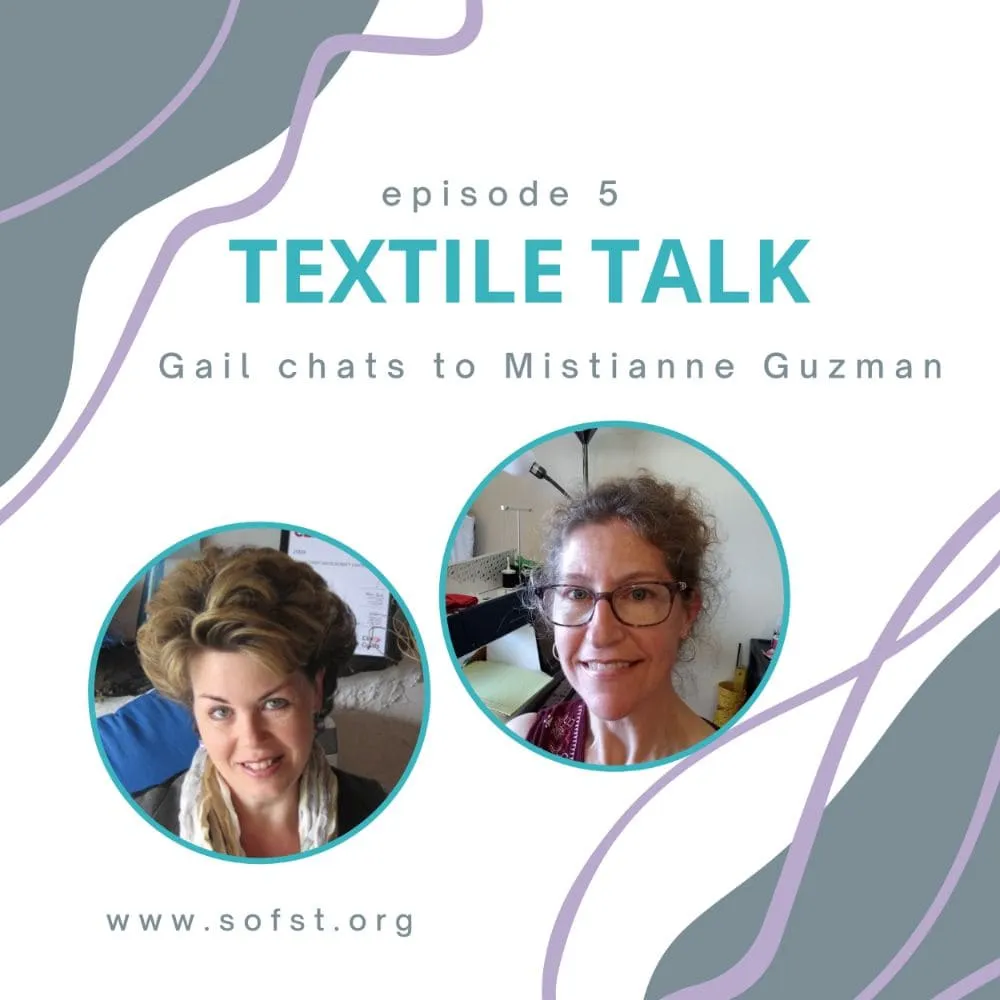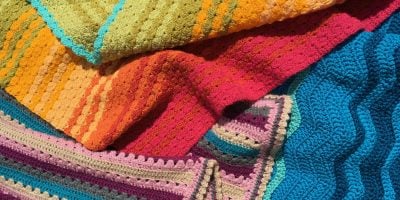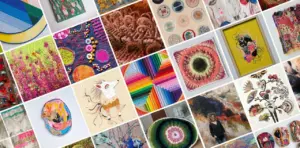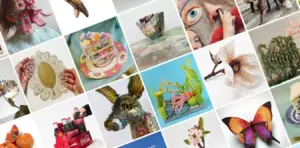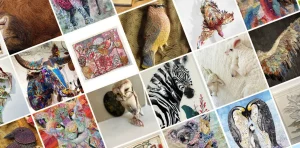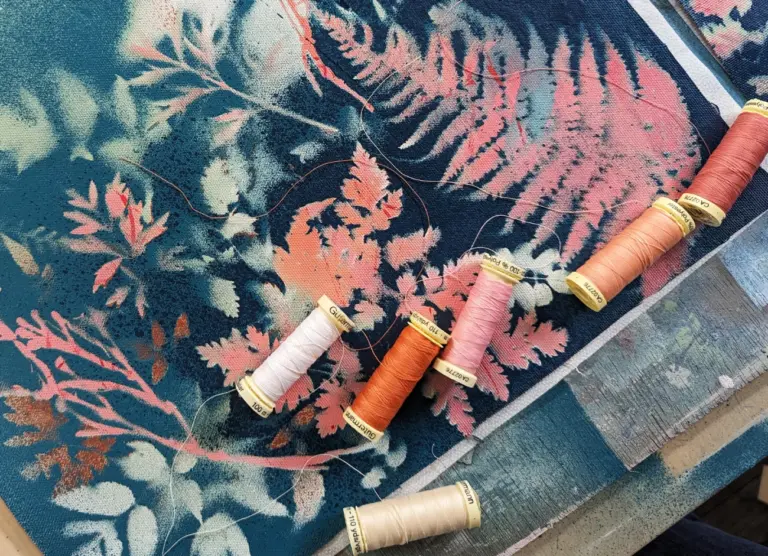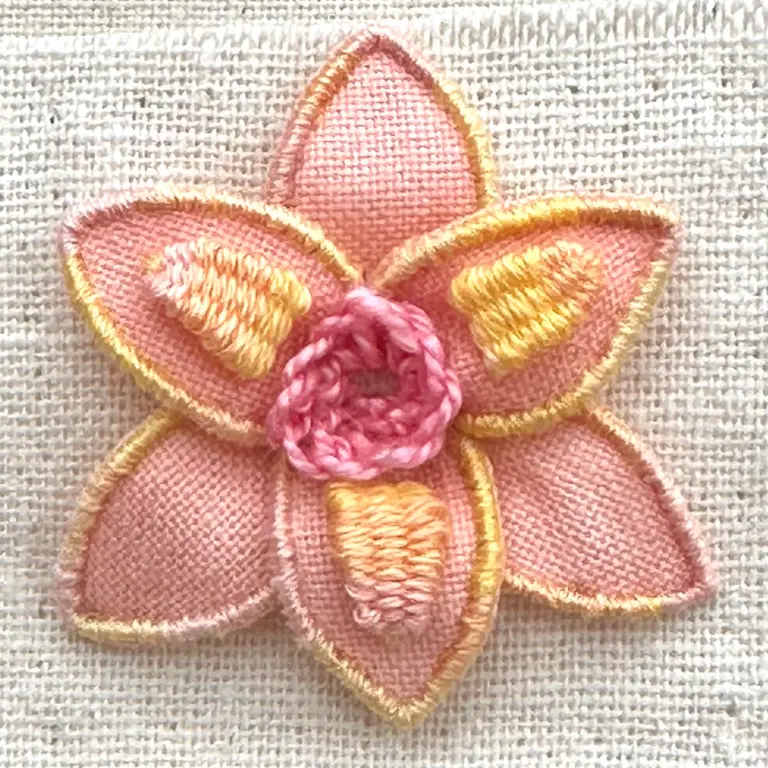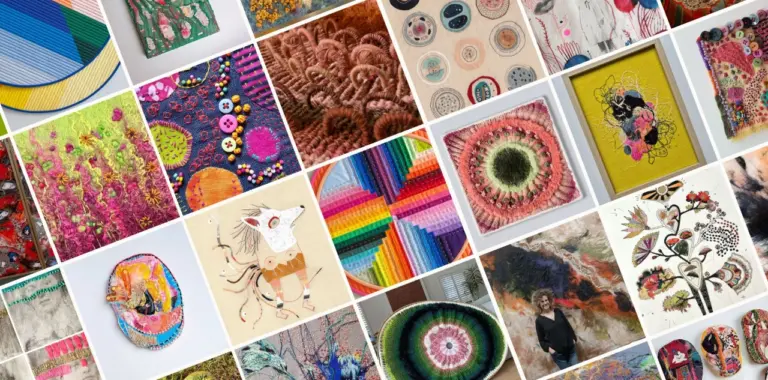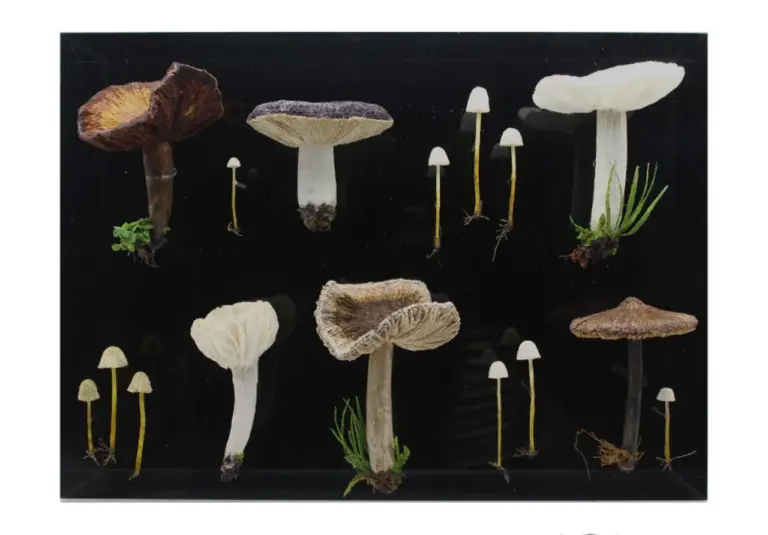In episode 5 of our Textile Talk podcast – where we interview with inspiring artists – we talk to SST Patchwork and Quilting graduate, costume maker and tutor, Mistianne Guzman.
Textile Talk with Mistanne Guzman
Listen to the podcast now or read her interview below. Take a look at a small collection of her work and find out more about her travels, inspiration and becoming a tutor with the School of Stitched Textiles.
About Mistianne Guzman
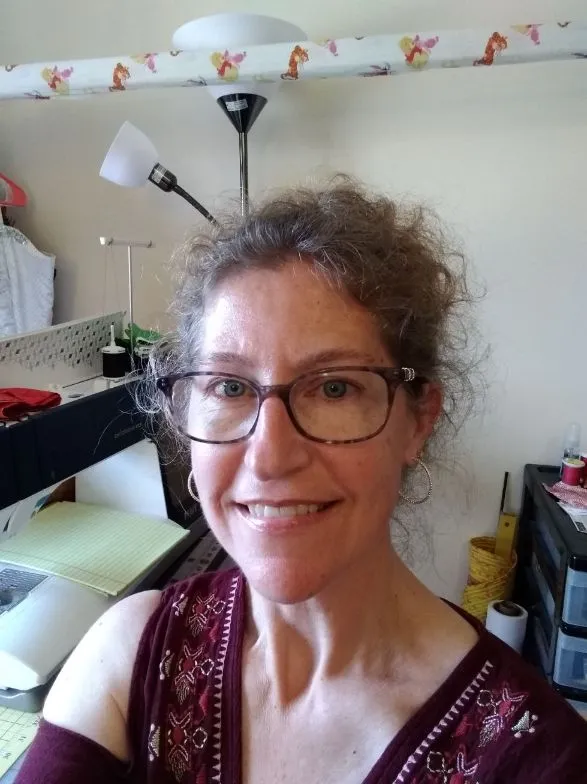
Mistianne Guzman has been quilting since she was 25 years old and found herself craving some more colour in her life. That led her to walk into a fabric store, and she’s never looked back since.
Although mostly self-taught, Mistianne completed our Skill Stage 4 Patchwork and Quilting Course and has since become a tutor with the School of the Stitched Textiles.
She has owned her own online quilt store, specializing in batiks, taught many classes, and is an avid hand quilter. Besides quilting, she is a costume mistress and creates professional ballet costumes. She also crochets and embroiders in her spare time.
Gail: Hello, everyone, and a very warm welcome to this episode of Textile Talk Podcast. I’m Gail Cowley, and I’ll be your host today. Joining me is Mistianne Guzman, who owns the Stray Bobbin Fabric Store. She is a designer, maker, and tutors textiles and quilting courses for School of Stitch Textiles.
Just to give you a little bit of background on Mistianne, she has been quilting since she was 25 years old and found herself craving some more colour in her life. That led her to walk into a fabric store, and she’s never looked back since. Mistianne is mostly self taught, and she not only creates quilts just for the joy of it – the smaller the pieces are the better she likes them, – but also for competitions. And she’s had her quilts travel all over the world. One of her quilts was recently used to make up a calendar for clients of hers. She has completed a skill stage four program with The School of Stitched Textiles in patchwork and quilting and has gone on to tutor for them for the last couple of years. She has owned her own online quilt store, specializing in batiks, taught many classes, and is an avid hand quilter. Besides quilting, she is a costume mistress and creates professional ballet costumes. She also crochets and embroiders in her spare time.
Gail: Thank you so much for being with me today, Mistianne. It’s great to have you here on the Textile Talk Podcast, and I think the first thing that I’d like to do, if I could, is start off by asking you just to give us an introduction to the techniques and materials that you prefer to use in your quilting.
Mistianne: When I first started, I would do anything that I had, which is whatever was accessible. And then as I progressed through my quilting career, I fell in love with batiks, and that is my one true love because it doesn’t shed all over you and, like, you’re wearing threads the rest of the day, and it holds shape. And there’s a lot of people that have bad things to say about batiks. They say it’s too hard or I don’t know why they would say that. I’m a hand quilter, so I can hand quilt through batiks just fine. So. I love batiks. But now as I’ve progressed into more textiles, it’s anything that has bling. I love sparkle, I love shimmer, anything that I could put a little bit more lace and gems on. I’m happy.
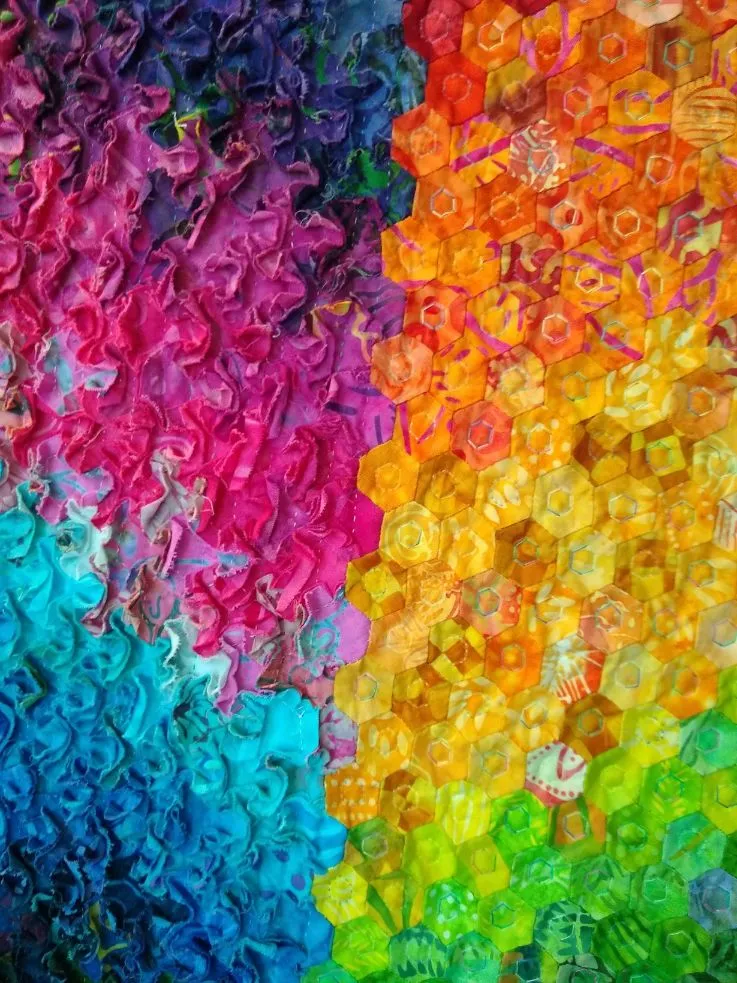
Gail: Wonderful. I believe that you do tutus for ballet costumes. They must be wonderful for bling.
Mistianne: Oh, my goodness. They are so much fun. It all started a couple of years ago. My daughter’s a ballerina, and her academy at that time needed some tutus redone refurbished, so they gave me 22 tutus. This is this is how it all began. So I took them all the way down, literally, I cut everything off, and I just had the base left. So I cut all the tulle off, all the bling off everything, and then I rebuilt them from there. And that’s how I taught myself how to make them. And then I had fun embellishing, and that’s when the love of bling set in. And then I looked at my quilts and thought, they look boring. And so it kind of jump ship from there.
Gail: It’s quite a niche area, isn’t it? Tutus? That is quite niche.
Mistianne: It is. It’s difficult because it takes at least 80 hours to make a tutu.
Gail: Wow. I had no idea it was so long.
Mistianne: Yeah, it’s quite a while. And then it can take longer or shorter, depending, of course. But if you have the student, it’s a lot easier than if you were trying to just do it for measurements. But I’ve gotten down now where I’m faster than the 80.
Gail: Do you have to have a few fittings within that?
Mistianne: Ideally, it would be good to have a few fittings, but actually, I’ve only ever fit two students. Everything else has been a small generalized size, medium, large, extra large. And then you just add a whole bunch of hooks, right. So they can make it tighter? Tighter or looser as it goes. So it’ll fit a variety of students every year.
Gail: Are they usually all the same? I mean, when you say 22, is it 22 that are all exactly the same?
Mistianne: No, they are incredibly different. So if you think Black Swan, and then you think Nutcracker Sugar Plum fairy, and then you think Jasmine Arabian Knights, and then you think Lebellia and Dolls, and so, yeah, they’re all over the place.
Gail: Wonderful. That sounds fascinating. You teach for the School of the Stitched Textiles, but you teach the Patchwork and Quilting. So how do you find the two sort of fit together?
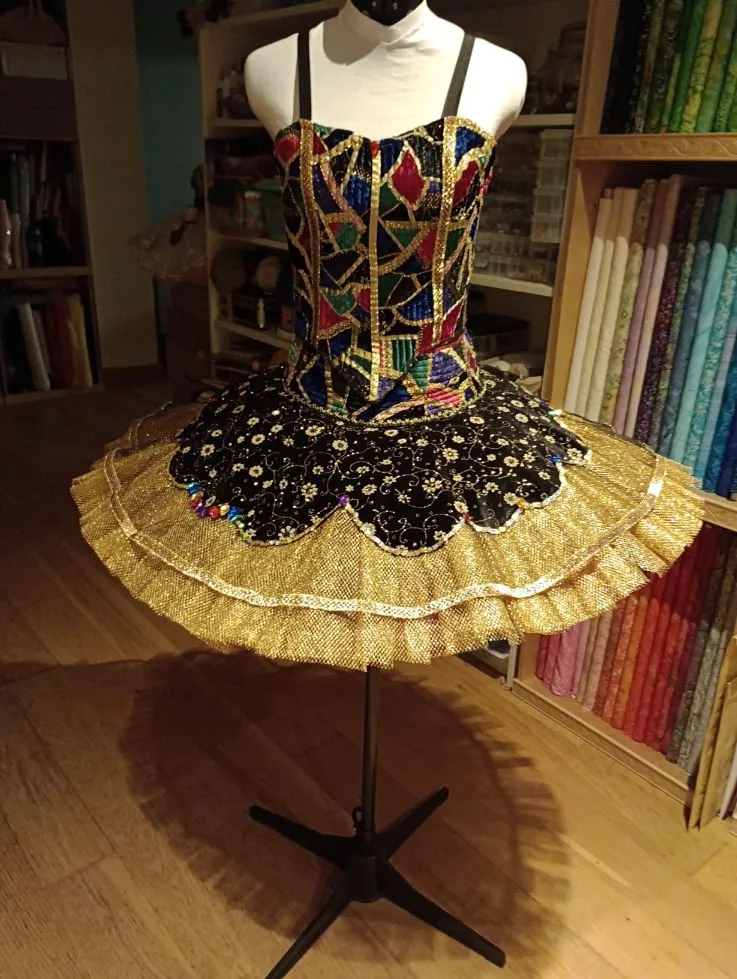
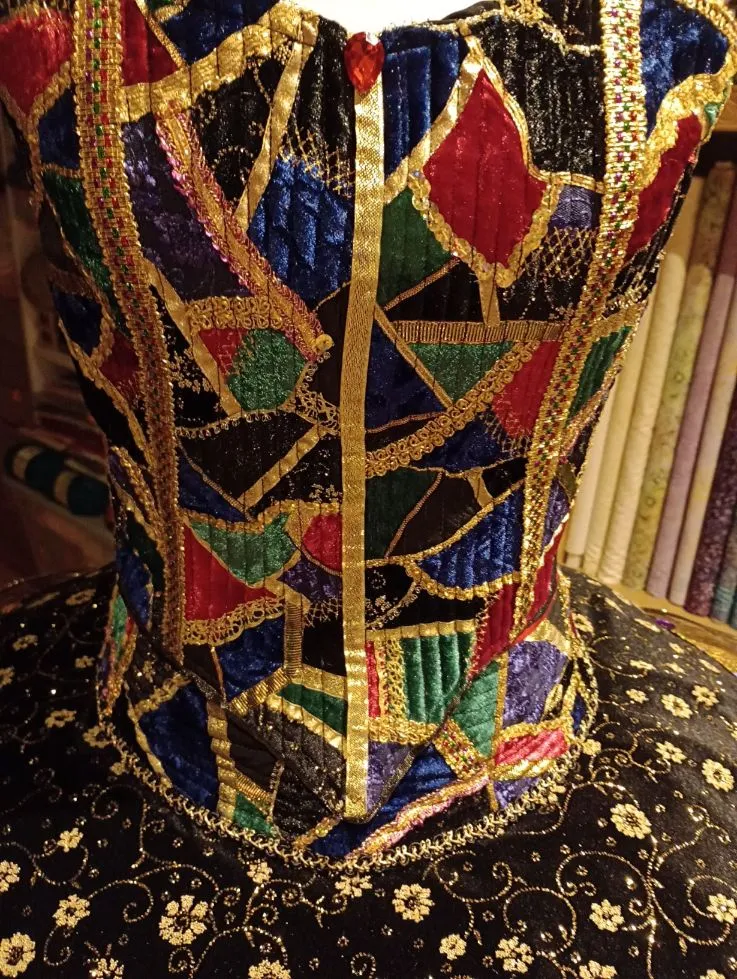
Mistianne: Well, I obviously was teaching before I became a mentor at the school, but I had owned my own store, and then from there, when I would go to I don’t know what you call them here, but we would call them markets in the States, and you would have your booth. And then they asked me to start teaching at those, weekends. And so then I was able to analyse my students work, and then they would start emailing me and asking, is this okay? Or I’m stuck here? And so I felt like I was already mentoring students before I even came to work. And because I was a student with your school, I actually knew how the whole module thing worked, which has been a total blessing because a lot of my students struggled in the same area as I did. And so I can understand, like, yeah, I was irritated by this too, but there’s actually a reason for it, and I’m seeing it afterwards, so I was able to help them through yeah, you may not like this part, or you don’t see the reason for this part, but it all makes sense at the end.
Gail: Yeah. It’s really interesting, actually, to hear you say that, because when I actually set up the school, I mean, a long time ago now and 20 some years ago, but I had done my City & Guilds, my diploma, as it was then, with Opus in London. They’re not going anymore, unfortunately. Julia Capra passed away some time ago. But I remember clearly just getting one sheet of written instructions and thinking, Where do I go with this? And when I had students of my own that wanted to study at a distance, I realized at that point, it just makes it so much easier if you’ve been there as a student and then, as you say, all of the pinch points, the bits that are hard to work out.
Mistianne: Exactly.
Gail: I mean, often they’re different for everyone, aren’t they? They’ll be different for different students, but I think the insight helps.
Mistianne: Yes, there is a variety of students, but they all seem to dislike the certain areas, and then at the end, they go, okay, you have that one.
Gail: Yeah. It can be a bit of a challenge. I know, I know. Originally from Oregon, aren’t you?
Mistianne: Yes.
Gail: But you’ve traveled very widely. All over, really.
Mistianne: Yeah, I’m getting there. I’m working at it.
Gail: Have you been everywhere? Have you do you still have places you want to take off your to do list?
Mistianne: It’s actually whittling down, so there’s some places I’d love to revisit. There’s some places that I only saw one town in the whole entire country, and I’d love to see more. But before we get sent home back to the States, we are going to go to Geneva and France. So those are wonderful, switzerland and France. So we’re going to get those in before we leave. And the cost of a ticket sometimes more expensive.
Gail: Do you have a favorite?
Mistianne: Edinburgh.
Gail: Really?
Mistianne: Yes. And then all over the world, and there is no other city like Edinburgh.
Gail: What’s so special about it? What attracts you to it so much?
Mistianne: It’s got to be the stonework, the old houses, the little teeny tiny alleyways just the off centeredness of it, and that you could just walk out your door and you’re there. But yet you can also just turn a left and then you’re at Dean’s Village, which is this beautiful river and quaint little place just right in the middle of Edinburgh. It’s not right in the middle, but it’s close, but it’s got nature right there.
Gail: Of course. You lived there for a while, didn’t you?
Mistianne: I did. We lived there for a year because.
Gail: That must have been really wonderful to live somewhere that you enjoy so much.
Mistianne: We love the city and hated our apartment, so it was a mix, and.
Gail: Really it was a mix.
Mistianne: But no, there’s just nothing like walking up out of the train station, and there’s a castle right there. Welcome back to Edinburgh.
Gail: And so what were the opportunities for fabric shopping like? not no.
Mistianne: Not!
Gail: No?
Mistianne: There is one very expensive store downtown, and then there was one that was fairly decent next to where we lived in Edinburgh. But because I had moved off a little bit from quilting and was expanding into more into the ballet, more and more, I had to find things online. But here in England, we moved to Alfreton, and there is an amazing store in Chesterfield, and it’s got fabric for quilts and fabric for two tooth all in one place. It’s very dangerous.
Gail: I can imagine all that fabric. It all together under one roof. So just going back to the sort of the travel theme, I know that you spent time teaching English in Japan. Japan full sort of disclosure is the one place I really would want to go to and haven’t. I’m really interested to hear a little bit more about your feelings about it and what you did there.
Mistianne: Well, I lived in Osaka, so that’s the second biggest city in Japan, and it is near Kyoto, which is the I don’t know if it’s the original. There’s been so many where the emperor lived, but he lived for a while in Kyoto. But Kyoto has tons of temples and nature and deer that will go up and nudge you. It’s an awesome place. But we lived in Osaka, which was right next door, and it was a big city, and there wasn’t much colour. And after about three months, I was becoming colour starved, deprived, wanting something in my life that had colour. But I lived there for two different years. So the first year I was a high school exchange student, but the second year that I went back, I actually taught in the high schools. So the first time I went, I learned all of the Japanese slang and bad words. So that when I went back to I knew exactly what the students were saying. It was gross, but I was living on my own, and so I actually just walked into a store and found fabric, and that’s where I started. Quilting was just strictly for I wanted colour.
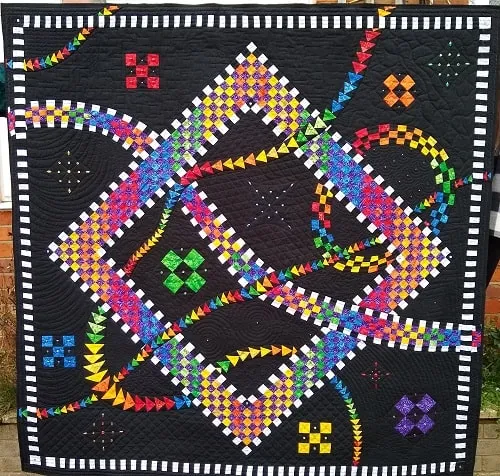
Gail: So is the fabric different there? I mean, is it is it traditional patchworks fabric, or is it something more.
Mistianne: Exotic, like well, I was there 30 years ago, so I don’t know what there is now. And I know that quilting is a huge thing over there now, especially with hand quilting. But back then, I didn’t know anybody there that really did any handwork. They made handmade kimonos, but they didn’t do quilt. So the fabric I found I thought was 1930 is old and boring, and they were, like, not even a fat quarter in size, but it was an outlet because I had always done something artistic in my life up to that point, and I’m just craving relief. So mom had quilted, so I kind of knew the basics of I cut out my templates with scissors, and I knew how to do needle and thread and I just probably why I love hand quilting so much because that’s just how I started.
Gail: So what sort of quilting were you doing then? Were you doing sort of small pieces, cushions or what kind of thing were you producing?
Mistianne: The first thing I made was a panda bear pillow. I just designed a panda bear out of squares and triangles and made it a pillow. And then the second thing I made was a double sized, I guess more Amish style. It was just squares, but it was basically black with bright colours, solids. That was the second thing I made and then it just kind of gone from there. I’ve made probably over 500 quilts since then. Wow.
Gail: So what do you do with them? Or do you keep them? Are they for sale? Do you give them away?
Mistianne: I don’t have that many. I sell them, I put them in shows and mostly I give them away. I keep on teasing my kids because they’re going to end up with all the ones that are just used and look horrible and all the really fancy ones nobody will know about because they’re gone.
Gail: But you photograph them hopefully before you obviously. That’s a very diverse background, isn’t it?
Mistianne: Sort of.
Gail: From the States to Japan to have all of the different influences. And how do you find that quilting in general differs the UK to the US. I always think of the United States as the home of quilting, and whenever I’ve seen, the stores have just been amazing compared to what we have here.
Mistianne: That was the biggest shock was that, like I said, I had stated before, I had an online quilt store and I didn’t have that much fabric. But when I walked into quilt stores here, I actually had more of my personal stash from that store than you guys sell in a store. So I was like, okay, where’s the rest of the store? This can’t be just this is it. So that was a shock. And then to be told that people didn’t like Batiks, I was like, oh, crushed bone, how could you not like Batiks? Because that’s all I sold with Batiks. And so I still have several bolts of Batiks, which has been my lifesaver since I’ve been here, since I can’t find them here. The other thing is that you guys don’t seem to have much of a variety from one store to the next. They all kind of look similar.
Gail: They all tend to be quite what I’m going to call ditzy prints?
Mistianne: Is that what yeah, I was going to say French. Brutal. But.
Gail: Yeah, they do tend to be I suppose it to do with the size of the repeat so that they fit easily, I guess.
Mistianne: I don’t know. But there’s so much more out there. That was a little disappointing also to find out that quilting isn’t as big over here. I thought for sure. I’d be doing a lot more quilting since I’ve been here. And actually my ballet stuff has taken over since I’ve been here because quilting just hasn’t been in as much demand.
Gail: So when you say that, do you mean that there are as many people wanting to buy the finished quilts or there are as many people actually doing quilting as a hobby?
Mistianne: Yes, to quilt.
Gail: Okay. And I wonder why that is.
Mistianne: I don’t know. I don’t know. And I’ve I’ve had several requests to teach hand quilting, and so we set up the class, and then no one signs up for it. So hand quilting for sure is not very big over here.
Gail: It’s interesting, actually, because we’ve just had an enrollment here and we’ve actually this time taken a lot more patchwork and quilting on this enrollment than anything else, which is slightly unusual. So I wonder if there’s been perhaps a little bit of a turnaround, maybe, in that hopefully, because it is a wonderful pastime.
Mistianne: It is. And I can’t tell you how many hours I’ve spent quilting watching my girls do ballet or gymnastics or whatever just because I can just take it with me anywhere. So much easier.
Gail: It’s just a case of being organized before, isn’t it? Because you have to have everything cut out and organized for you to actually take, I suppose.
Mistianne: But I’m a little over, so that doesn’t bother me.
Gail: So I know that you’ve obviously talked about your own business, which is the stray Barben, isn’t it?
Mistianne: Correct.
Gail: And is that still the name that you use for the dance commissions as well? Are you still running that?
Mistianne: Yes, I still am. And it is going like crazy on the Ballet Bodice side, the ballet costume side, the quilting side, not so much. But I assume after I move back to the States, it will probably pick back up.
Gail: Yes, I suppose. It just sounds really strange to me because I’m mainly dealing with people that do the craft rather than I know nothing at all about ballet. Absolutely nothing. So are they used to do amateur productions that you’re making for? I mean, where are they all going, these dance costumes?
Mistianne: They either go to Ballet Academy for their school, for their in recitals. So you have the Net cracker season is what I call it, which is December. So you have everybody who does their annual December show, usually the Net cracker, and then you have competition season, which is January, February, and then some people do a show in March, and then there’s another show in June. So those are kind of the ups and ups. So right now, I just recently sold a whole bunch, and now we’re slow again, and then it’ll pick up again for the next right.
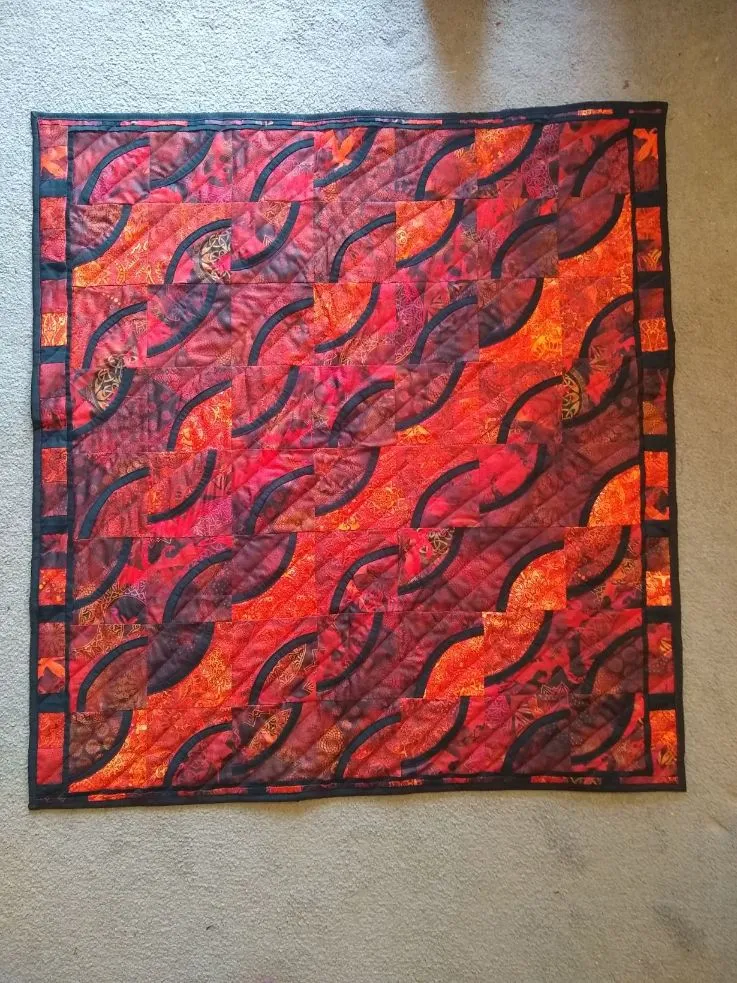
Gail: So I had no idea it was so seasonal.
Mistianne: It’s very seasonal, yes.
Gail: Do you go and see the productions after, you know where where your your costumes are being worn?
Mistianne: Well, 90% of the ones I’ve sold since I’ve moved here have been in the States, so it’s kind of expensive to go see them. I did make some for my daughter, graduated from Edinburgh Festival Ballet. And so we made some romantic tutus for them and some platter practice tutus. So I have seen those in person, but for the most part, no, I don’t see them. There’s been some in Sweden, Denmark, the States. There’s gosh here.
Gail: Wherever they’re going.
Mistianne: Well, don’t get me started on the whole packing shipping scenario that happened with the Royal Mail that are stuck. They’ve been stuck since January 9 and they’re still at the local hub. So I’ve had to make another set to get them in time so they can get it to their show.
Gail: Oh, no. Oh my goodness. We’ve had problems with students abroad getting their certificates because obviously we had Royal Mail strikes before Christmas.
Mistianne: Right.
Gail: And then since we’ve had I think it’s some sort of cyber attack on Royal Mail.
Mistianne: Correct.
Gail: So, unfortunately, we’ve sent out to two students, one in Oman and one in Denmark, the day that the actual hub went down.
Mistianne: Exactly.
Gail: For Nostalgic, one has arrived, even though it’s saying it hasn’t left this country. And when you use the tracking device, it’s saying, yeah, I know it hasn’t left, but obviously it has because we know it’s in Denmark. The other one just has not arrived. And this is now the third one that we’ve had. The third certificate we’ve had to send out to this poor student who is waiting. So I feel your pain, but it’s nowhere near the representation of work that you must have when dance costumes go missing.
Mistianne: Yeah, I know. It’s rather on the expensive side.
Gail: Yeah, I can imagine.
Mistianne: I’ve been shipping them with I think it’s every and it still took longer than they said, but at least it got there.
Gail: Yes. I’ve got a friend actually that sells I’m going to call them children’s fancy dress costumes, I suppose, characters and that kind of thing. So she imports the actual fancy dress and then sells it and then obviously has to pack out and she just changed to every because she says that Roy Mail has just been a nightmare. So hopefully it can only get better.
Mistianne: For me to leave the country.
Gail: Yes, sorry about that, but fingers crossed. Obviously we touched beforehand on you being a past graduate of ours, I’d be really interested to know how you found the change from being a student to being a tutor.
Mistianne: It was actually quite easy because I had already been tutoring basically beforehand through my own company, so that company store. But it just took a little bit of how do you phrase things? Things like that, that took a little bit of practice. But it’s actually quite easy to say, that looks great, and even if I don’t agree with the colours or like the colours, because my taste of colours are different than the next person’s. I can see where they’re going with it. And that’s always fun. I’m always excited to see what the next thing they create is. So it’s actually kind of easy to get transferred over.
Gail: It’s quite a responsibility, I suppose, isn’t it? Because obviously you’re looking at things before people make them, before students make them. And as tutors, we’d all hope to catch if there were any potential pitfalls. But as you say, not everything, of course, would necessarily be to our taste. It wouldn’t necessarily to be our colour scheme or to our final taste. So it can be quite a difficult line to walk.
Mistianne: I think it is, because sometimes I’ll look at that and go, oh, my goodness. And now Go Cara’s, come here, because she has a different colour. And I’m like, what do you think of that? Sometimes it’s kind of nice to get a different opinion, but for the most part, just because I’ve been in the industry now for so long, it’s easier for me to step back and look at the work, not necessarily the colour or look at the precision and not necessarily the layout, if that makes any sense. I can kind of take it apart. Kind of like what a judge would do with a show. Right. They don’t necessarily have to like the quilt, but they can appreciate the work that’s been done on the quilt.
Gail: Yeah. Do you go to quilt shows?
Mistianne: I do. And I actually have a funny story about one.
Gail: Oh, wonderful.
Mistianne: I entered a, quote, show in hand applique and I got told I won second prize and I was all excited and I showed up and they had moved it to the machine application category because they didn’t believe me. So I won second place in the machine category.
Gail: Well, that says an awful lot about your home searching.
Mistianne: Are they making sure that I’m a machine? I’m not sure how you should take.
Gail: That, but I think it’s a compliment if you’re hand stitching for a machine. I think we’d all like that, wouldn’t we?
Mistianne: But most of the time I have a problem entering quilt shows because my quilts never fall into any category. They always cross or they’re always pushing the boundaries or like hand quilting can only be a certain size. And I’m always asking why sometimes my quilts don’t get accepted.
Gail: So I suppose very often people do fall into that. They either do the hand or they do the machine. But they don’t often cross over a great deal, do they?
Mistianne: Correct. And I just do whatever this piece speaks. Sometimes a little machine is needed, sometimes.
Gail: A mixture, I suppose, is perhaps the best of both worlds, would you think?
Mistianne: Exactly.
Gail: So do you prefer to work on something that’s actually a commission, such as the dance pieces? Or would you prefer to be working on a piece of your own?
Mistianne: So interestingly enough, in the quilting category, I prefer it to be my own. Totally, 100%. Working for other people is harder because then you’re dealing with the colour, and if you really hate the colour, you’re going to be staring at it for a while, or you don’t agree with exactly what they’re saying and you know that it’s not going to last long, but they’re the customer. So that’s always hard as a ballet costume because it’s always playing with bling. I haven’t actually disliked working for that yet. That’s still been fun. We’ll see what happens in a couple of years, but for now, most of the time, I make them and they just buy a pre made in the store. I have had commissions where they send me what they want. I go by the fabrics and the layers, take a picture, send it to them, and if they like it, I make it. So it’s still mostly my choice.
Gail: So I’d be really interested, obviously, for our students here at school, stitch Textiles. They have to go through that process, don’t they, with the design, and then actually choosing a final design, producing perhaps a few, choosing a final one, costing it all up and that’s, obviously, I presume the process you go through when you’re making either a quilt or a costume for somebody. Can you tell me a bit about that process? How do you manage that for a.
Mistianne: Quilt or for a ballet costume?
Gail: Either.
Mistianne: Both, because the quilt is way more complicated than the ballet costume.
Gail: Okay.
Mistianne: Because the ballet costume, they say, I want the four seasons. So you go by four colours and you choose the lace that you want. You take a picture, you send it to them, they go, yes, that works, and then you make it. For quilts choosing colours, they don’t have to stand up on stage, they have to stand up up close. So there’s also size and there’s how many stitchings do you want? Do you want machine? Do you want hand? How close together do you want? Do you want it specialized? Do you want it general? There’s a lot more choices in quilting than there are in the ballet bonus world.
Gail: And do you find that generally people are commissioning a quilt for a bed or for a piece that’s going to hang on the wall?
Mistianne: It’s usually for a special occasion, like a baby or a wedding. I haven’t gotten very many for walls at all. It’s mostly for it’s going to be used, which means I have to tell them back, hey, it’s going to be washed and maybe it’s going to spit upon it. We can’t do this, it’s going to be too delicate, that sort of thing.
Gail: Right. And I suppose, obviously, if they’re using it somewhere within their house and it’s going to have to fit into their general colour scheme.
Mistianne: Correct, exactly.
Gail: That must be quite a challenge, especially by distance, because obviously we think it’s challenging teaching by distance. But if you’re actually trying to exchange colours and things by distance, that is difficult, isn’t it?
Mistianne: It is. And actually I have Truthfully Pared down doing commissions for scratch quilts. What I love to do is repair quilts. So a lot of times I will get the quilt top that they found in the attic that Grandma made and they want it finished. I totally love to do that because it’s normally by hand and then I’ll go research the year it was made in and I’ll find the popular quilting motives of that time and then put it into the quilt. Or I’ll repair pieces here. They sent me a Welsh quilt. I had never seen a Welsh quilt before and I repaired holes in it so that they could continue to use it. That I love to do way more than a scratch from start to finish quilt. I like to bring the past back to life so it’s usable. I totally believe in washing your quilt and using your quilt, not folding it up and storing it in your back in the closet, which is what a.
Gail: Lot of people do, isn’t it? They do fold them. So Welsh quilting, I’m sure a lot of the listeners won’t have heard of that. Can you tell us a little bit about it?
Mistianne: I don’t know much. It was a whole cloth and it had another border on the outside which I had unfortunately had to cut off because the moths had eaten all the way around. There was nothing left, there’s no way I could solve that. And then I had to try to save the top. So I actually ended up taking the complete back off, if I remember correctly, and then putting it back together and then filling up the little holes.
Gail: That’s a lot of work.
Mistianne: It was, but it meant a lot to them. It was the family members who had passed away and they wanted to keep it.
Gail: I see. How do you work out how much to charge somebody for that? Because again, I know this is something that we ask our students to do to cost work, but how do you do that?
Mistianne: So I charge them, obviously, any materials. That’s pretty easy. For hand quilting, I pull I know you guys use meters here, but I use yards. I pull about a yard with a thread per pole per doing my needle. And so I will charge 25 pence or 50 pens. I used to charge 25 pence. Now I charge a little bit more per one of those threads. So I just count how many I use. That way it covers if it’s an easy pattern to quilt, then you get charged less. If it’s more complicated, you obviously use more thread and then you get charged more instead of doing for the square inch because I don’t think I don’t like how that’s used. So in machine, I would probably do per bobbin because obviously, again. More complicated, you’re going to use more bobbins than less complicated and so I just set a price amount to that and that’s how I charge for the quilting part. As for the rest of the part, I charge whatever I decide I feel like to be charged per hour and paid. Right.
Gail: Have you ever got to the point where I mean is that something that you have to tell someone beforehand? Because I imagine that you could easily get to the point where someone said I had no idea how it was going to be so much and I’m not paying that.
Mistianne: I usually give them an estimate because I can kind of tell, okay, that’s going to be fairly easy and it’s not a baby quilt, 200, you’ve done it enough, you know, and then if I feel like I’m going to go over I will let them know before I’m finished.
Gail: So I’m assuming that through a series of trial and error you came to that as being the best way to do it.
Mistianne: Yes, I stumbled upon that pretty quick on it just made logical sense to.
Gail: Me and I suppose that there must have been occasions before that that perhaps you either ended up doing a lot of work you didn’t get paid for or the other way around.
Mistianne: Well you normally do a lot of work they don’t get paid for. I don’t think any artist ever pays for what their total amount of time was. If I charge how many hours it took to make it to nobody would ever be able to afford it.
Gail: Would you say that it’s as much a pleasure as it is? It’s almost a little bit of both. It’s a business but also it’s something that you obviously get pleasure otherwise you wouldn’t consider what’s next for you. I mean I know obviously that you’re making the move back to the States. Sure, unfortunately yes but we’re really sorry to see you go but hopefully you will still continue to assess for us. Of course, but we have students all over so it’s actually quite good that we also have assessors that are from distance as well. It sort of fits nicely. What are you hoping to do anything different when you get back to the States?
Mistianne: I think I’m going to continue growing the ballet side and then I’m not going to reopen my booths of the quilting but it really depends on where we go. I’ll probably still quilt or teach quilting if I can when I go there and I still have my own patterns, I have a whole bunch of patterns that I’ve created that I’ll probably still sell and things like that but I don’t think I’m going to restart my fabric store.
Gail: So when you say markets, is that sort of what we would say, a farmers market almost no like your quilt.
Mistianne: Village Quilt and Stitch show that was just here just above Leeds.
Gail: Is it? Harrogate.
Mistianne: Yeah I called it Harrogate. There is a quilt and stitch show up. There that type of thing where everybody has their booths. That’s what I would do.
Gail: Okay, I see. So you’ll be obviously needing to book a little way ahead for those, I presume, to get the space correct.
Mistianne: But I don’t think I’m going to do those again. I think I’m just going to go to the Vocal quilt stores and see if they need a teacher, if they want to buy my patterns. But I’ve been enjoying so much because I did the quilting for so long, and I love the quilting that I can do in the ballet costumes. I’ve done some pretty intricate, crazy quilting, ballet tutus that I feel like I can mix them so well. And I get the best of both worlds quilting and playing with flying in the ballet costume world. So I think my textile love is leaning in that direction more and more. Plus, I picked up embroidery, and I’ve taken some courses, and I love the embroidery, too. So I did gold work a little while ago. That was a lot of fun.
Gail: It’s a great way of getting sibling onto, well, almost anything.
Mistianne: But that’s why I wanted to take the embroidery, is because buying embroidery is so expensive. So if I could make my own, that would be great. And I believe you guys have embroidery too, don’t you? I don’t work.
Gail: We do. Yes, we do. The gold work is actually included with the skill stage three and four advanced embroidery course. But we also have a separate gold work course that we do as a creative classroom one for beginners. I absolutely love gold work. It’s strange, actually, because it’s one of those things, and I think I don’t know if you agree with this with your students, but I find that very often students come along on a course and they have preset ideas about a particular technique. And it’s I don’t really want to do that. It’s too traditional for me. It’s this and that. And very often they’re the techniques that actually people end up really loving. They wouldn’t have done them voluntarily, but because the courses kind of pushed them into doing a little sample. And that’s really how gold work was for me. I did it as part of my diploma long time ago. And I was lucky enough to actually, because it was an attempted course. So I was in a group with somebody that held all the goldwork thread stock for the local church.
Mistianne: Oh, nice.
Gail: So we were able to purchase goldwear threads through her, which is a fabulous stock. This box used to come out, and it’s amazing. All sorts in it. And it’s one of the things because I’m not particularly traditional embroidery, but it’s one of the things I really enjoy. And I find that happens a lot with students that I don’t think I’m going to like this, but actually they end up loving it. I don’t know if you find that with your students.
Mistianne: I do. And usually my favorite thing is usually hand quilting.
Gail: Oh, do I have to do that?
Mistianne: Yes. You’re going to like it, too.
Gail: I’m going to make you. It does make a difference, I think. Also, sometimes people do it, and they only do a little bit because they’re not keen on it, and that’s fine. Sometimes you do find out that some techniques you just hate from the beginning, but at least they’re in your repertoire. Then you might not always love going back to them, but you can do if you need to. You’ve got that there as part of your what you can bring to the table if you’re considering a piece.
Mistianne: Exactly. And I have tried. I’ve rug hooked, I’ve woven things. I have spun, I have quilted, I’ve worked textile. I’ve been done embroidery. I’ve dabbled in everything just because I love learning. But there’s the ones that I like to do the most. And so even though I did gold work, it wasn’t my favorite. I enjoyed the embroidery with the sparkly threads, way more playing. I know I weaved scarves and things like that, but I could do it. It was like a checkbox. Okay, I did that. But I enjoyed Rug hooking. I thought that was a lot of fun. So it’s just you don’t know until you try.
Gail: And sometimes I think the most innovative pieces that I’ve seen students produce over the years have been the ones that actually employ a few different techniques.
Mistianne: Correct.
Gail: So it’s not just one, it’s a mixture of different ones breaking out of the box. Yes.
Mistianne: I find one for never following instructions, ever. Yeah, you look at the quote. That would be cute. But you need this. Don’t be afraid to add your own personality to things.
Gail: Yes. And personality and people’s style is something that I really love seeing them develop over the length of their course, because when they first start off, they’re a little tentative, I think it would be fair to say. Often, and that doesn’t apply to everyone, but very often, they can be a little bit concerned about designing their own samples or their own finished pieces. But over the course of their course, their program, that tends to develop. Once they do do it and become able to do it, it develops into very much their own signature, and it’s lovely to see that happen.
Mistianne: And I also see that a lot when you choose your artist or a picture, and then you have to develop a design from that picture that really pushes people. They don’t always like that, but it pushes them out of the box so that they can now walk down the street and look at things and go, oh, I could do something with that. Whereas before, they would look at it and just see that it was a tree. Now you look at it and you see the oak and the gnarly little curl that it does and that you could take that and use it. I think that’s important to understand what you see.
Gail: I always think when I say this to anyone that it sounds overly melodramatic, but I know when I first did my City & Guilds, they were going back quite a long way and I often hear it from my students that they never look at things in quite the same way again. Even if you have a really lovely view in front of you, or a sunset, or you’re almost mentally thinking, how could I? That would make a fabulous quilt, it would make a lovely embroidery. How would I manage to do that in fabric? What techniques would I use?
Mistianne: Exactly. Just opens up a whole other tool for you to use.
Gail: I think often as well, when I open somebody’s work, when I’m assessing it, I think it’s wonderful that you can tell it’s them. You don’t need to look at the name on the portfolio, you just know it’s them because it’s got their style stamped all over it. I don’t know if you find that with your students, but I certainly see that time and again with mine.
Mistianne: I see it more in the level three. I feel like the level twos are still trying to find their style.
Gail: Yeah.
Mistianne: And so they’re a little bit more all over, but by the end, when they do that final piece, you can tell.
Gail: Yeah, you really can, can’t you? That personality is very much coming to the fore at that point. And I think, as well, often see differences depending on where people come from. So we have a couple of students that are based sort of Norway, Sweden they have a very different style, obviously, as you’d expect, quite Nordic, muted colours, quite simple lines and shapes to the ones that are perhaps coming from southern America or wherever. But it is wonderful to see that difference. Not just a difference in techniques, but also a geographical difference.
Mistianne: Yeah. You take one look at a quilt and you’ll know if it’s Japanese or not. Yeah, just automatically, just because they used the topes, you could just tell that’s a Japanese quilt. So yeah, I totally agree.
Gail: I think as well, just the designs. The design is very much influenced by where people come from and their cultural background. It is interesting because, of course, the artist that somebody chooses or the design source that they choose when they’re doing their developing designs of their own, does make quite a difference as to what they eventually end up making themselves as finished pieces or samples. It is interesting to see the cultural differences and the geographic differences as well.
Mistianne: Exactly. I had some students that lived by the ocean and that was definitely their draw, was the ocean. Whereas people that were more in the Midlands, they didn’t even think about it.
Gail: Yes, sometimes people draw inspiration from sources that I wouldn’t even consider. We had somebody I can think of a little while ago that did some absolutely amazing design work, but very much from inner city source material and she just pulled out some amazing patterns of grids and some graffiti and things that we know are there but we don’t immediately think about as being a source for design.
Mistianne: That would be interesting to see.
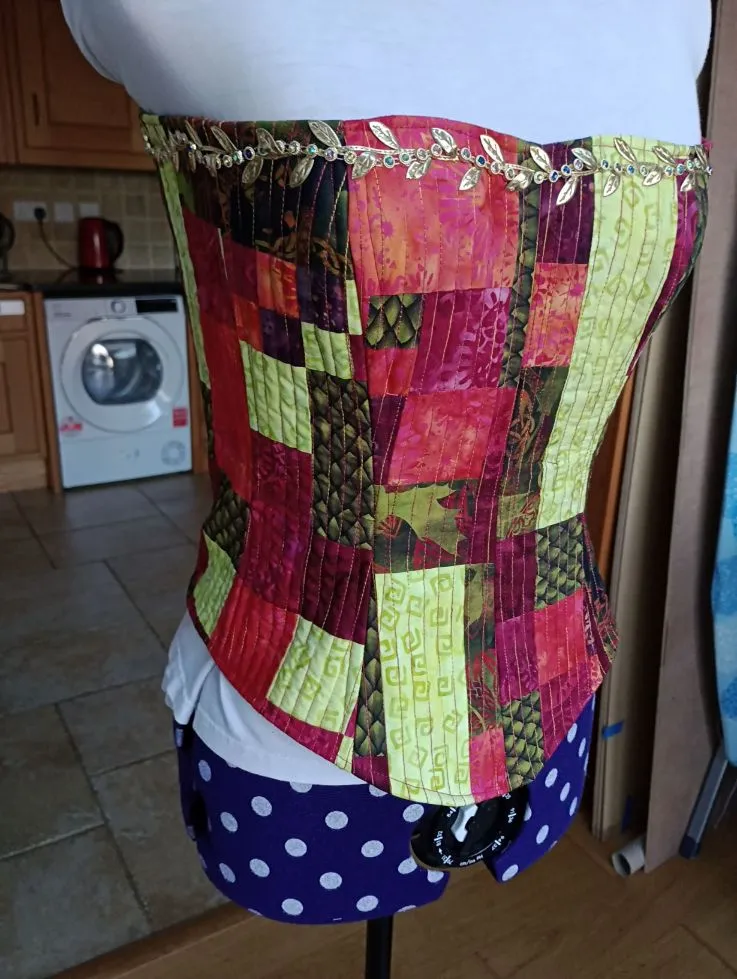
Gail: Yes, there is some great work done by the students. It really is. We’ll be getting shortly to the point where we’ll be putting up the Excellence exhibitions. So I would be asking you if you have any nominations. We do every year. But that’s great to see because it’s wonderful to see the really stand out pieces and design work and samples that people have completed during that course. I suppose that we’ve probably coming towards the end of our chat. Do you have anything as a sort of short story or anecdote that we could finish off with?
Mistianne: I guess the biggest thing I would say is don’t let people tell you how you should be. I started quilting at 25 and was told I did not have enough gray hair to continue. And how dare I if I don’t have any gray hair. And I ran into cross that the whole time. And then I ran across I thought my kids had a quilt at age two. They sat on my lap, they put a whole bunch of fabrics down on batting. I put netting on top and then they switched it underneath the machine, made their first quilt. I believe that anybody at any age can be artistic. So have fun.
Gail: That’s a really great message and it is true, of course. It’s often just taking the first step on that journey. Wherever you might be, I’m sure you have thoughts about what I would call the quilt police as well.
Mistianne: I might be OCD myself, but yeah, quilting is your own style. There is no correct way to do it. Just enjoy doing it. Don’t care how many stitches per inch you have, as long as you enjoy pushing the needle and the needle out and gives you meditation and you feel happier when you’re done, you’re doing a good job.
Gail: I couldn’t agree more. I think it’s wonderful, actually, that we’re moving, or we seem to be moving more to the point now where we’re looking on crafts generally as being mindful. So it’s less about the finished article than it is about the process of actually undertaking it. And that’s just so valuable, particularly in today’s world where we seem to be pushing everywhere and trying to do everything brilliantly.
Mistianne: When my husband comes up and says, you need to go quilting, you’re stressing. Yes.
Gail: No, it’s true. Mistianne, thank you so much for joining us.
Mistianne: Thank you for having me.
Gail: It’s been wonderful to talk to you and I’m sure everyone is really going to enjoy hearing more about you. So thank you.
Mistianne: Thank you very much.

